Guillaume Bertrand (died 19 May 1356) was a French prelate of the 14th century.
Guillaume Bertrand (died 19 May 1356) was a French prelate of the 14th century.
Coming from the Bertrand family, he was the son of Robert VI Bertrand de Bricquebec, Baron de Bricquebec, and Ide de Clermont-Nesle, and the brother of Marshal Robert VII Bertrand de Bricquebec.
Guillaume Bertrand was canon at Beaune and bishop of Noyon from 1331 to 1338, then bishop of Bayeux (1338-1347) and bishop of Beauvais (1347-1356).
In 1346 he defended the Chateau de Caen, where the king established him commander when the king of England besieged it.
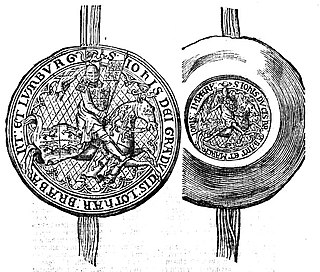
John III was Duke of Brabant, Lothier (1312–1355) and Limburg. He was the son of John II, Duke of Brabant, and Margaret of England.

Peter I of Bourbon was the second Duke of Bourbon, from 1342 to his death. Peter was son of Louis I of Bourbon, whom he also succeeded as Grand Chamberlain of France, and Mary of Avesnes.
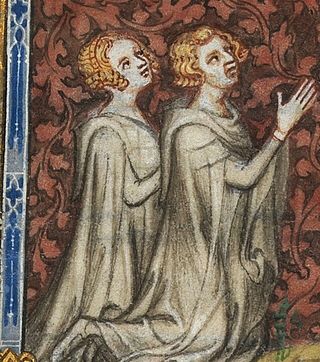
Bonne of Luxemburg or Jutta of Luxemburg, was born Jutta (Judith), the second daughter of King John of Bohemia, and his first wife, Elisabeth of Bohemia. She was the first wife of King John II of France; however, as she died a year prior to his accession, she was never a French queen. Jutta was referred to in French historiography as Bonne de Luxembourg, since she was a member of the House of Luxembourg. Among her children were Charles V of France, Philip II, Duke of Burgundy, and Joan, Queen of Navarre.

The Diocese of Beauvais, Noyon, and Senlis is a Latin Church ecclesiastical territory or diocese of the Catholic Church in France. The diocese encompasses the department of Oise in the region of Hauts-de-France. The diocese is a suffragan of the metropolitan Archdiocese of Reims. The current bishop is Jacques Benoit-Gonnin, appointed in 2010.
Louis V, called the Brandenburger, a member of the House of Wittelsbach, ruled as Margrave of Brandenburg from 1323 to 1351 and as Duke of Bavaria from 1347 until his death. From 1342 he also was co-ruling Count of Tyrol by his marriage with the Meinhardiner countess Margaret.

The Roman Catholic Archdiocese of Rouen is an archdiocese of the Latin Church of the Roman Catholic Church in France. As one of the fifteen Archbishops of France, the Archbishop of Rouen's ecclesiastical province comprises the greater part of Normandy. The Archbishop of Rouen is currently Dominique Lebrun.
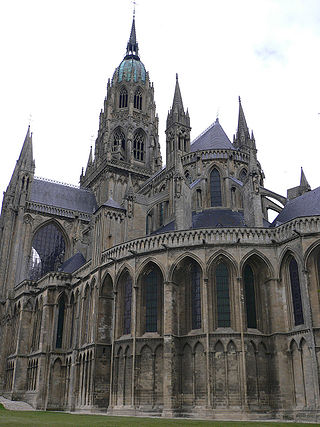
The Roman Catholic Diocese of Bayeux and Lisieux is a diocese of the Catholic Church in France. It is coextensive with the Department of Calvados and is a suffragan to the Archdiocese of Rouen, which is also in Normandy.

The former French Catholic Diocese of Noyon lay in the north-east of France, around Noyon. It was formed when Saint Medardus moved the seat of the bishopric at Vermandois to Noyon, in the sixth century. For four centuries it was united with the bishopric of Tournai as the Diocese of Noyon–Tournai. Then in the twelfth century it was again independent, and the bishop of Noyon became a pairie-comté of France.
The former French diocese of Thérouanne controlled a large part of the left bank of the river Scheldt during the Middle Ages. Territorially it was part of the county of Artois which belonged to the county of Flanders.
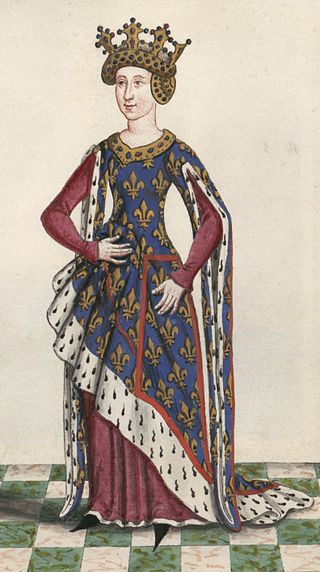
Isabella of Valois was a Duchess of Bourbon by marriage to Peter I, Duke of Bourbon. She was the daughter of Charles of Valois by his third wife Mahaut of Châtillon.
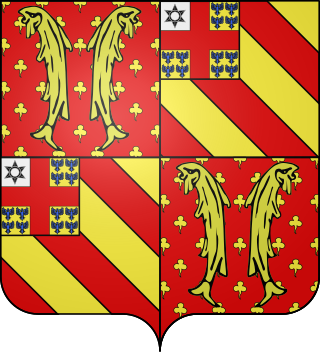
Guy I of Clermont-Nesle was a Marshal of France, Seigneur (Lord) of Offemont jure uxoris, and possibly of Ailly, Maulette and Breteuil. He might have been a Seigneur of Nesle also, or used the title "Sire of Nesle" due to his family. Difficulties about the seigneurie of Breteuil are present, and the status of Ailly and Maulette in relation to Breteuil.

Guillaume d'Aure, OSB, was born in Toulouse, France and died on 3 December 1353 in Avignon. He was a French Benedictine monk and Cardinal. He was the son of Bernard VII Dodon, Count of Comminges, and Bertrande, Countess d'Aure, daughter of Arnaud, Vicomte de l'Arboust. He had a brother, Raymond Roger d'Aure.

Bertrand de Déaulx was a French bishop, diplomat, and Cardinal. He was born, perhaps around 1290, in Castrum de Blandiaco in the diocese of Uzès; or in Déaulx. He died in Avignon in 1355. Trained as a lawyer and teacher of law, he practiced in the papal courts and became an arbitrator and diplomat for the Papacy. He had several assignments in Italy and one in Catalonia. He was responsible for the reorganization of the University of Montpellier and the granting of revised charters.

Pasteur de Sarrats was a French Franciscan friar, bishop and Cardinal. He was born in the village of Aubenas in the Vivarais, or he took his monastic vows in the monastery of Aubenas. Pasteur may have had a brother. A bull of Benedict XII, dated 13 April 1337, grants the parish church of S. Martin de Valle Gorgia in the diocese of Viviers to Pierre de Serraescuderio, Canon of Viviers since 1333, who held a parish of S. Pierre de Melon in the diocese of Uzès. Pasteur died in Avignon in 1356.
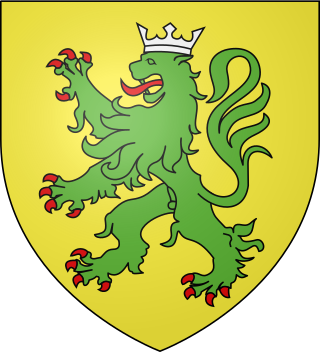
Robert VIII Bertrand de Bricquebec, also known as Robert Bertrand, Baron of Bricquebec, Viscount of Roncheville, was a 14th century Norman noble. He served as Marshal of France from 1325 until 1344.

Geoffroy d'Harcourt, called "the Lame", Viscount of Saint-Sauveur, was a 14th century French nobleman and prominent soldier during the early stages of the Hundred Years' War.
Louis I was Viscount of Thouars from 1333 to 1370 and Count of Dreux jure uxoris from 1345 to 1355. He was also lord of Talmont and Mauléon. Louis was the son of Jean I, Viscount of Thouars, and Blanche of Brabant.